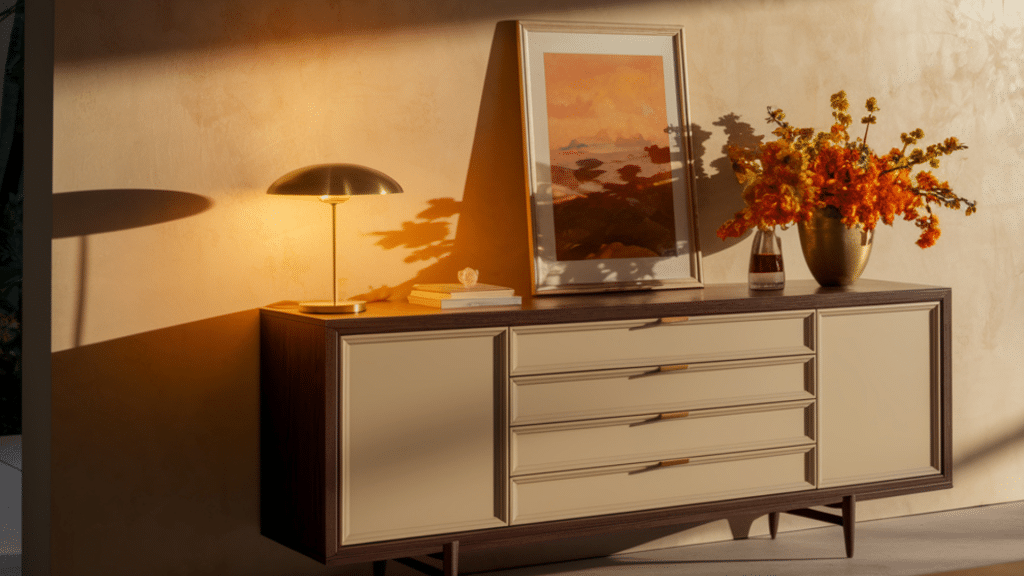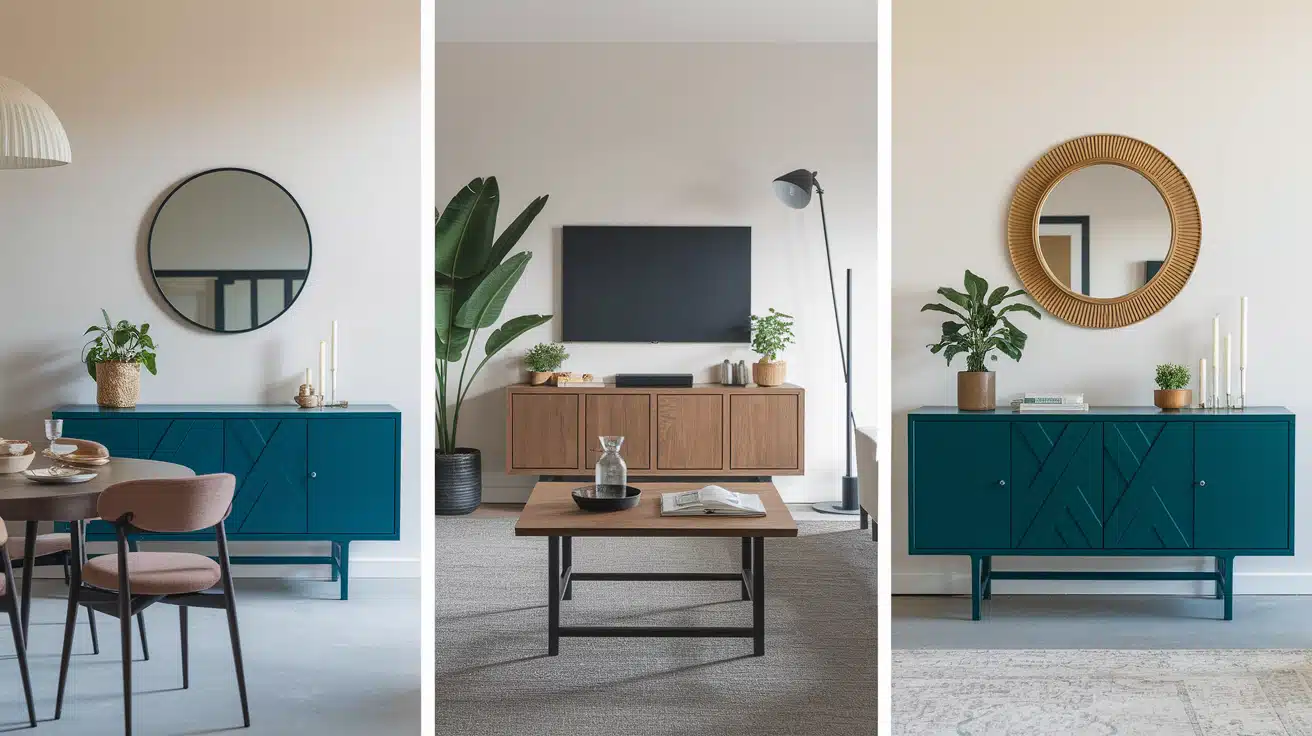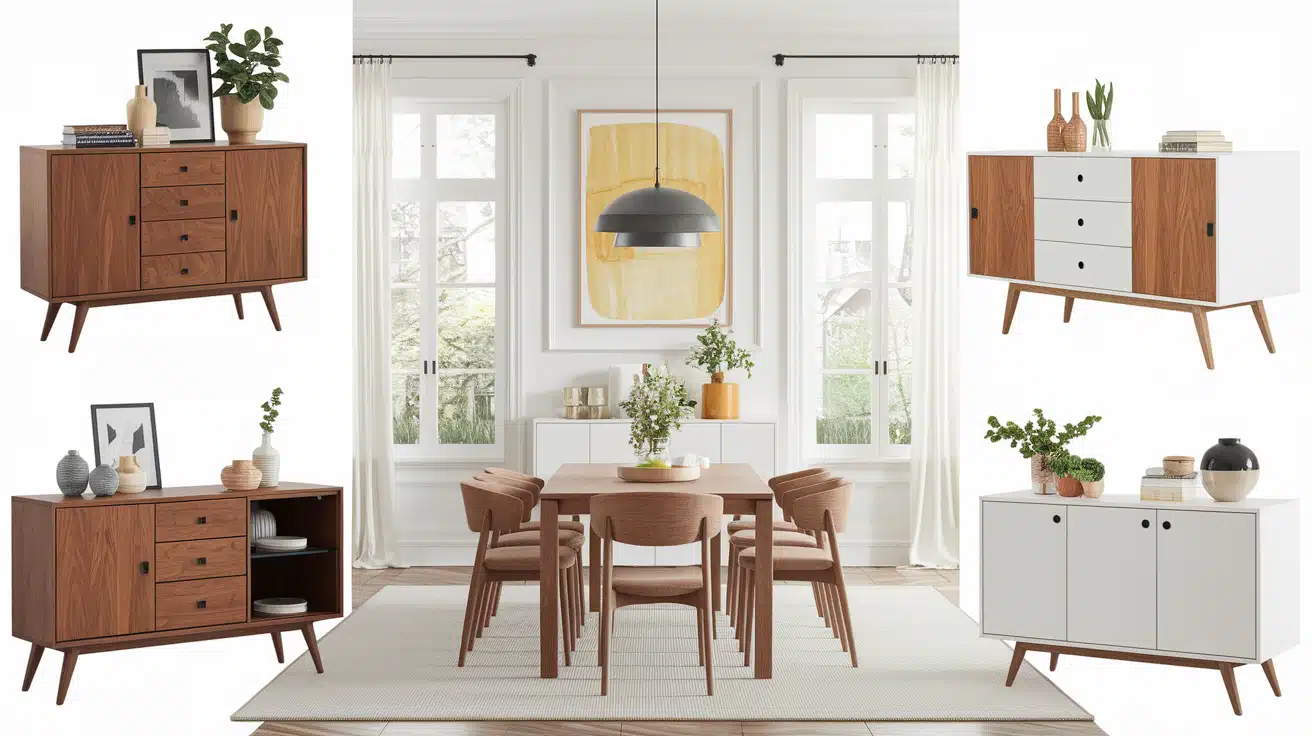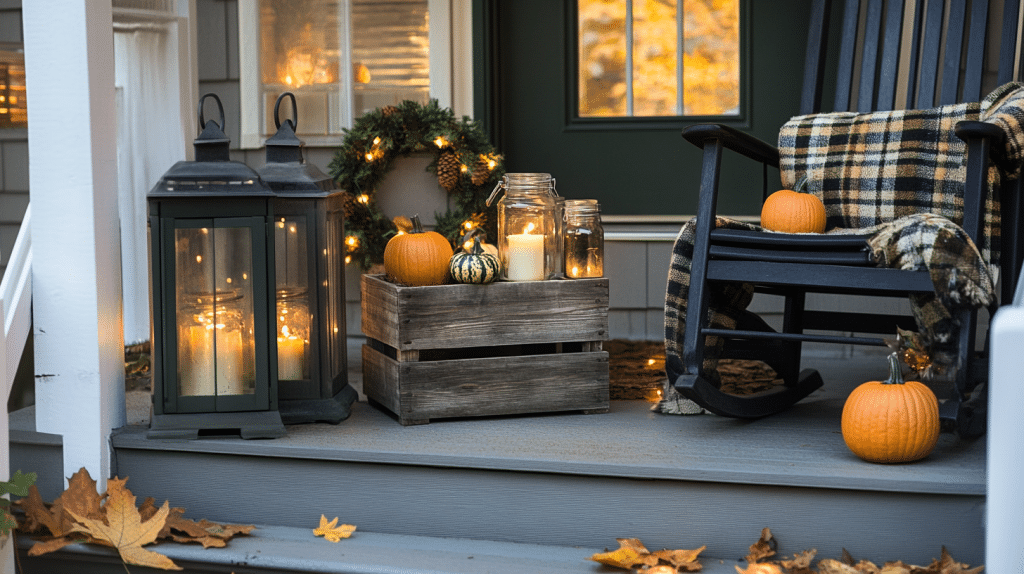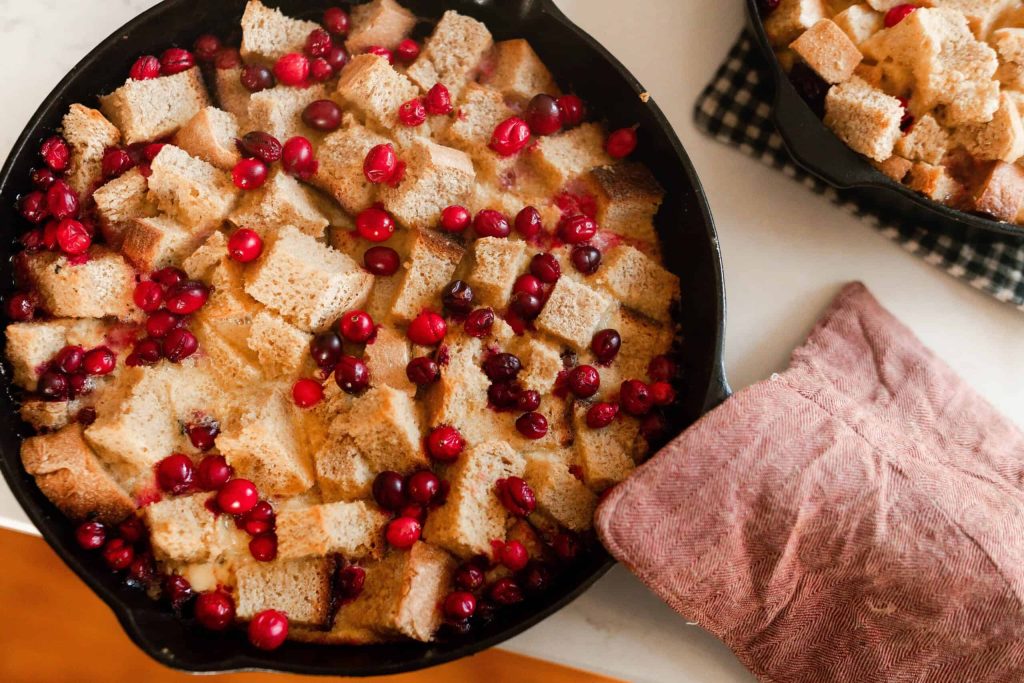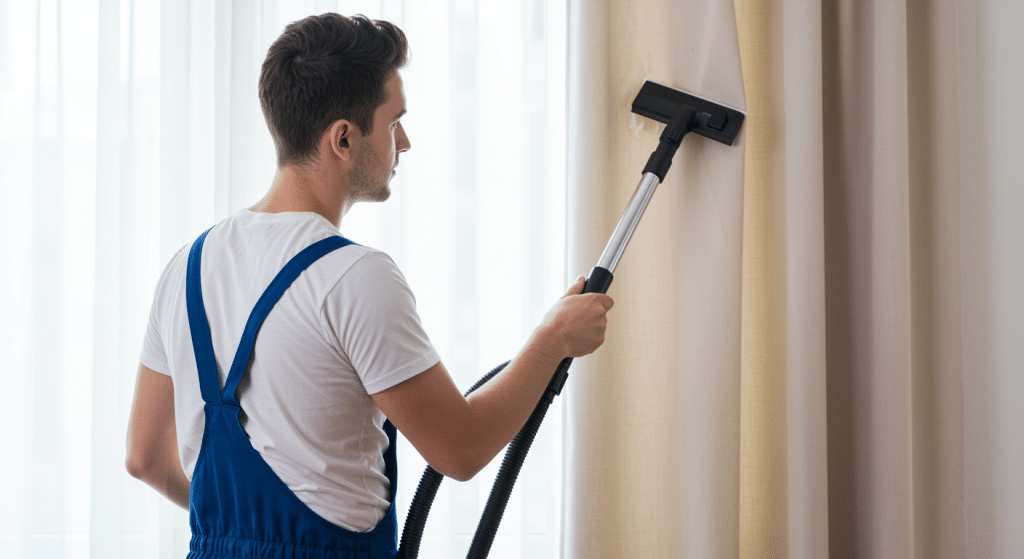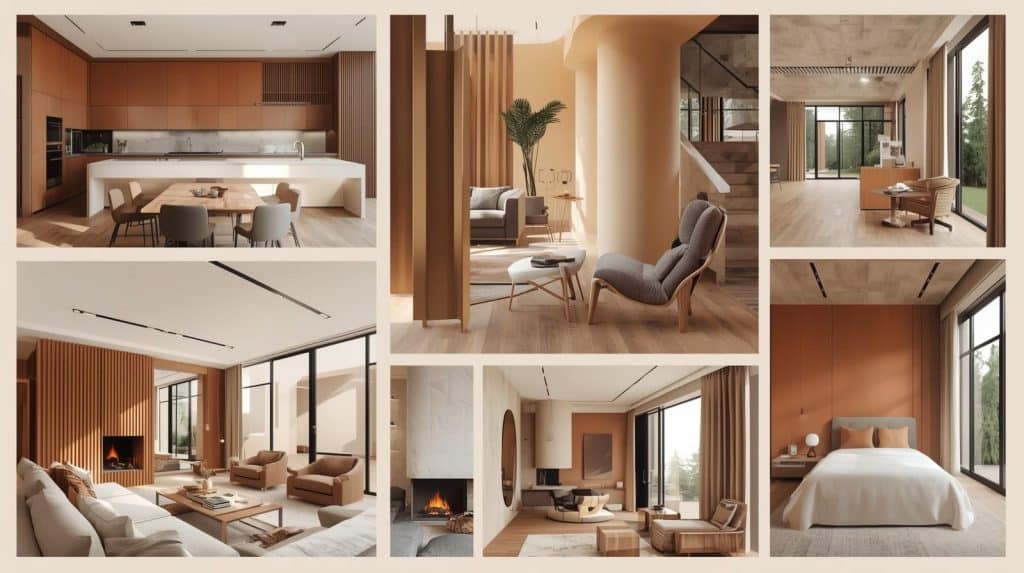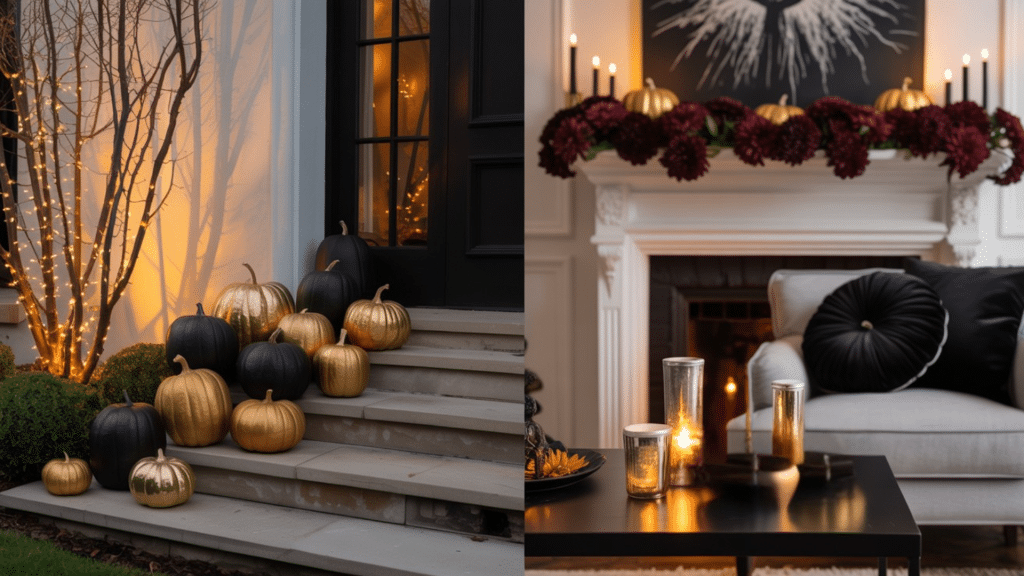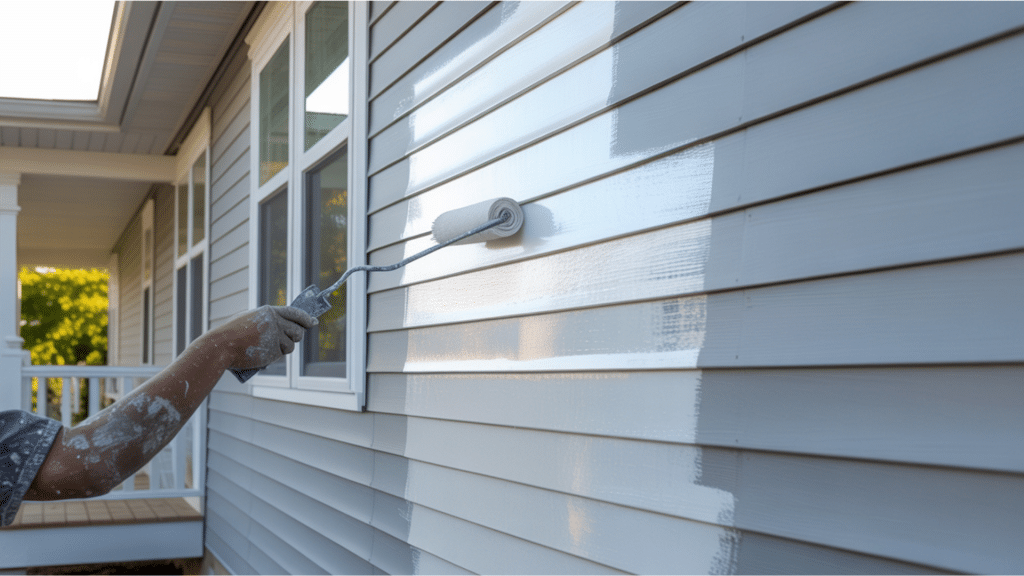Looking for furniture that adds both storage and style?
It’s hard to find something useful that also looks great. That’s where learning what a sideboard is can help.
Whether you call it a sideboard, buffet, or credenza, it’s a must-have in modern homes.
In this blog, you’ll learn what a sideboard is, how to choose the right one, and simple ways to style it beautifully.
What is a Sideboard and What is it Used for?
So, what is a sideboard? It’s a long, low cabinet with drawers or doors for storage and a flat top for display.
Most people place it against a wall in the dining room, living room, or hallway. It’s a mix of style and function, great for storing items while adding beauty to your space.
Sideboards serve three main purposes.
- First, they provide storage for dining essentials like dishes, glassware, silverware, and table linens.
- Second, the flat top functions as a serving surface for meals and beverages, making it ideal for buffet-style dining.
- Third, they act as display areas for decorative items such as vases, lamps, picture frames, and artwork.
In modern homes, sideboards have expanded beyond traditional dining rooms and are now used in living spaces.
For media storage, in entryways for organizing keys and mail, or in home offices for supplies.
This practical furniture piece keeps spaces organized while serving as an attractive focal point in any room.
Sideboard vs Buffet vs Credenza
While all three provide storage and display space, sideboards offer versatile functionality for multiple rooms, buffets focus on traditional dining with taller legs, and credenzas feature modern, sleek designs with sliding doors.
Here’s a detailed difference between the three:
| Feature | Sideboard | Buffet | Credenza |
|---|---|---|---|
| Height | 30-36 inches | 34-40 inches (taller) | 30-36 inches |
| Legs | Short legs or low to ground | Longer, prominent legs | No legs; sits flat on floor |
| Primary Location | Dining room, living room, hallway | Dining room | Office or dining room |
| Storage | Cabinets and drawers | Cabinets, minimal drawers | Sliding doors, rarely drawers |
| Design Style | Versatile | Traditional, formal | Modern, sleek |
| Primary Use | Storage and serving | Food service during meals | Display and workspace |
| Door Style | Hinged doors | Hinged doors | Sliding doors |
Where to Place a Sideboard in Your Home
Once you know what a sideboard is, the next step is choosing where to put it. The right spot makes it both useful and stylish. Here are a few ideas for your home:
Dining Room
Place the sideboard against a wall opposite or adjacent to the dining table for easy access to dishes, silverware, and linens.
The top surface serves as a buffet area during meals. Maintain 24-36 inches of clearance for comfortable movement.
Living Room
Position the sideboard against a main wall as a media console or storage unit.
Place it beneath a television or behind a sofa to display decorative items while storing electronics, remotes, and entertainment accessories.
Entryway or Hallway
Use the sideboard along the entryway’s longest wall to create an organized drop zone for keys, mail, and daily essentials.
Add a mirror or artwork above to enhance the welcoming atmosphere and keep clutter contained.
Home Office
Place the sideboard along a wall to store documents, office supplies, and equipment. The flat top provides extra workspace or display area for printers and decorative items.
Key Placement Tips
- Measure your space for a good fit.
- Leave 30–36 inches in front for easy access.
- Place it against a wall for stability.
- Keep pathways clear for smooth flow.
- Add art or a mirror above for balance and style.
How to Style a Sideboard
Styling a sideboard transforms it from simple storage into a stunning focal point. Follow these practical tips to create a balanced and visually appealing display.
1. Start with a Clean Base
Clear and clean the surface thoroughly for a fresh start with intentional styling choices.
2. Apply the Rule of Three
Group decorative items in odd numbers, particularly threes, arranged in triangular formations with varying heights for visual interest.
3. Layer Different Heights
Combine tall pieces like vases or lamps, medium-height items like frames, and low objects like books or bowls to create depth and dimension.
4. Add Texture and Contrast
Mix different materials, smooth ceramics with rough wood, shiny metallics with matte finishes, and soft textiles with hard surfaces for dynamic appeal.
5. Create Visual Anchors
Use statement pieces like large mirrors, artwork, or sculptural objects as focal points that anchor the entire display. Hang artwork above or lean framed pieces against the wall for a layered look.
6. Add Natural Elements
Include fresh flowers, potted plants, or natural objects like branches or stones to add color, texture, and freshness to the display.
7. Leave Breathing Room
Avoid overcrowding. Leave negative space between groupings to let each element stand out and prevent clutter.
Use this simple formula: place a large piece on top, add a tall item on one side, a medium piece in the center, and a low item on the other. Adjust until it feels balanced and matches your style.
How to Choose the Right Sideboard
- Decide the Purpose: Think about where you’ll use it: in the dining room for dishes, the living room for decor, or the entryway for storage and style.
- Measure Your Space: Check the area before buying. Most sideboards are 30–36 inches high, and you should leave about 24 inches of space in front to move easily.
- Pick the Right Size and Storage: Choose drawers for small items, cabinets for large ones, or open shelves for display. Match the size to your room so it doesn’t feel crowded.
- Choose the Material and Finish: Go for solid wood for a classic look, MDF for budget-friendly use, or metal/glass for a modern touch. Pick a finish that fits your decor.
- Match the Style and Color: Make sure it matches your room’s look—modern, rustic, or mid-century. Light tones make a space feel open; dark ones add contrast; bold colors make a statement.
- Set a Budget and Check Quality: Prices vary by material and craftsmanship. Choose a sturdy, well-built piece that fits your budget and is easy to clean and maintain.
- Add Your Personal Touch: Style the top with simple decor like lamps, art, or plants to make it feel complete and reflect your personality.
The right sideboard should fit your space, match your taste, and make your room both beautiful and functional.
Why a Sideboard is a Smart and Stylish Addition
Sideboards provide valuable storage for everyday items like dishes, glasses, linens, and silverware, keeping clutter out of sight.
The flat top serves as a serving area during meals or displays decorative items like vases, lamps, or picture frames.
These versatile pieces work in multiple rooms, dining rooms for dishes, living rooms for entertainment items, hallways for keys and mail, or bedrooms as stylish dressers.
Start exploring sideboard options that match your style and storage needs, and turn any room into a more organized and beautiful space today.


